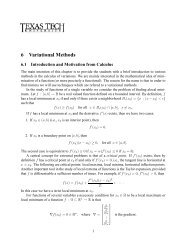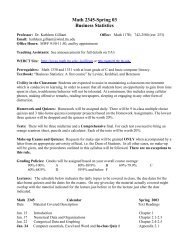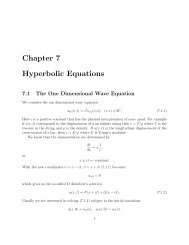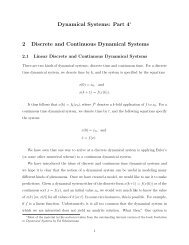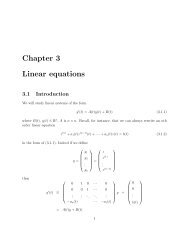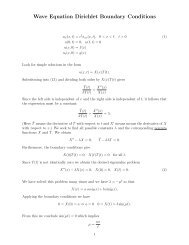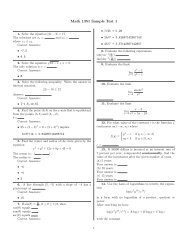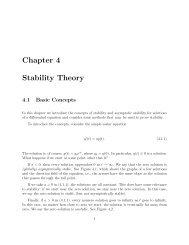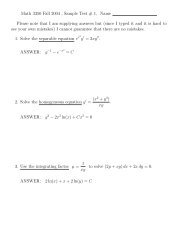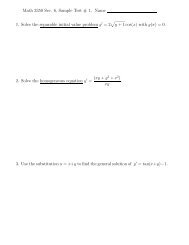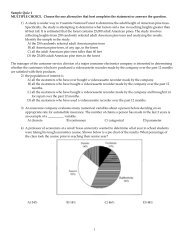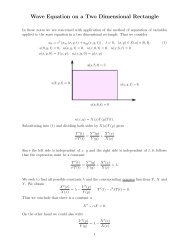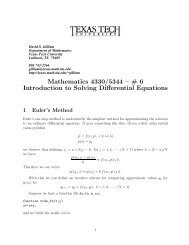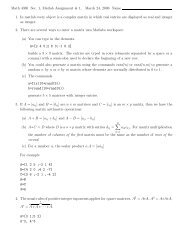Chapter 6 Partial Differential Equations
Chapter 6 Partial Differential Equations
Chapter 6 Partial Differential Equations
You also want an ePaper? Increase the reach of your titles
YUMPU automatically turns print PDFs into web optimized ePapers that Google loves.
6.2. LINEAR AND QUASILINEAR EQUATIONS OF FIRST ORDER 23<br />
and so<br />
au x + bu y = c.<br />
Recall that in the case of a differential equation in R 2 a solution surface is a surface in<br />
R 3 which (at least locally) can be parameterized by a two parameter family. Thus what<br />
we have shown is that the collection of all characteristic curves thorugh C 0 gives a solution<br />
surface. Uniqueness will follow by arguing that any solution surface is essentially a collection<br />
of characteristic curves. In particular let u(x, y) be a solution of the equation and fix a point<br />
P 0 (x 0 ,y 0 ,z 0 ) on the surface. Let γ :(x(t),y(t),z(t)) be the curve through P 0 determined by<br />
dx<br />
dt = a(x, y, u(x, y)), x(0) = x 0<br />
dy<br />
dt = b(x, y, u(x, y)), y(0) = y 0<br />
z(t) =u(x, y), z(0) = z 0 .<br />
Then along this curve<br />
dz<br />
dt = u dx<br />
x<br />
dt + u dy<br />
y<br />
dt = au x + bu y = c<br />
since u is a solution. Thus we see that γ is the characteristic curve through P 0 . In other<br />
words, a solution is always a union of characteristic curves. Through any point on a solution<br />
surface there is a unique characteristic curve.<br />
Therefore if C 0 is not a characteristic curve, there is a unique solution surface that<br />
contains it. If, on the other hand, C 0 is a characteristic curve then<br />
x ′ 0(s) =a(x 0 (s),y 0 (s),ϕ ( s))<br />
y 0(s) ′ =b(x 0 (s),y 0 (s),ϕ ( s))<br />
which contradicts |J| ≠0.<br />
Remark 6.2.15. The above discussion shows that if C 0 were a characteristic curve we could<br />
construct infinitely many solutions containing C 0 . Namely, take any curve C 1 that meets C 0<br />
in a point P 0 and such that |J| ≠0on C 1 . Then construct the solution surface through C 1 .<br />
As discussed above, this solution surface must contain the characteristic curve C 0 .



